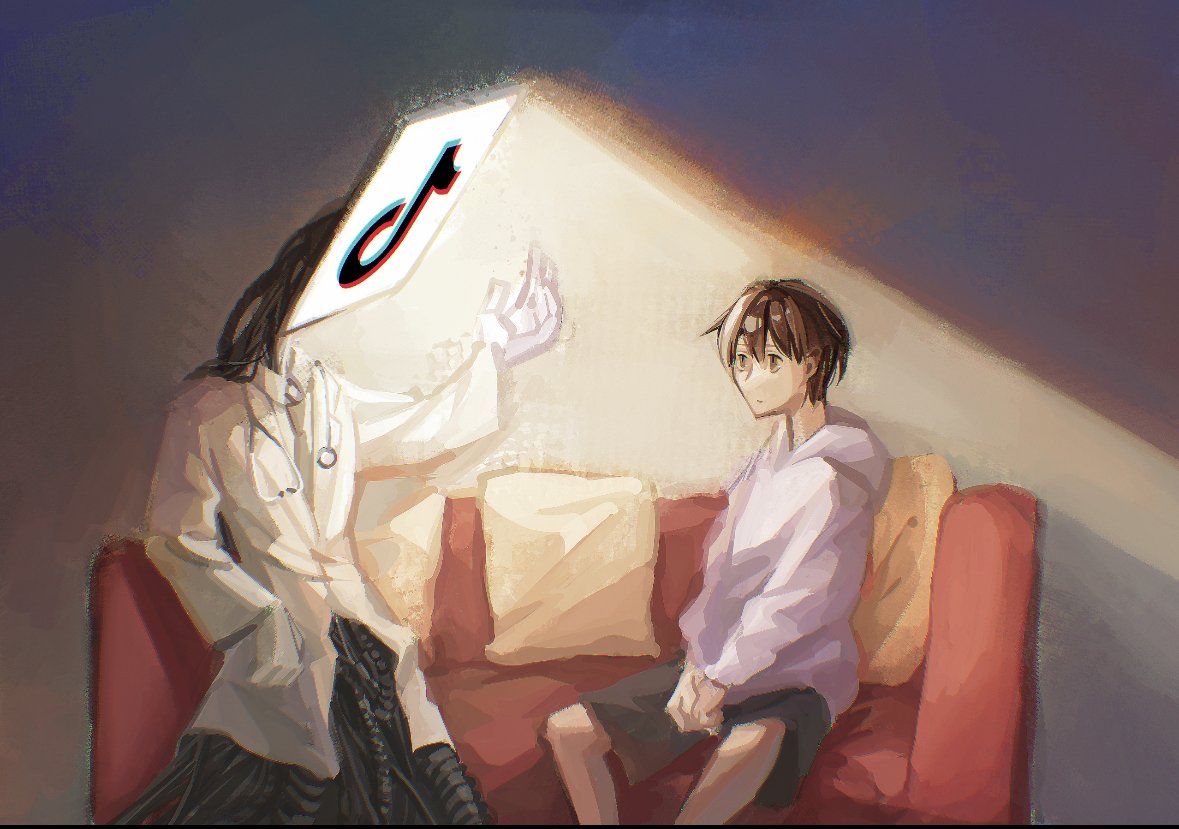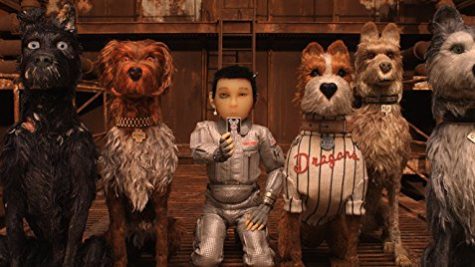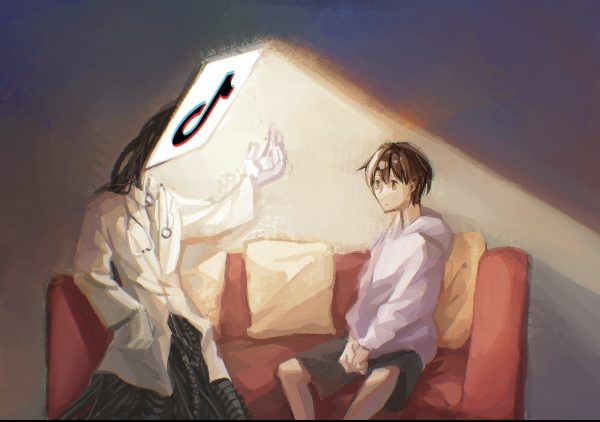Isle of Dogs, a two-part post – Part 1: Isle of Dogs is doggone delightful
April 8, 2018
It is difficult to review a Wes Anderson movie in an original way, because ultimately each review includes the words “inventive” “creative” and “brilliant,” and each one discusses how “new avenues in cinema” have been opened that is a “beacon of hope” for the “future of film.” Of course, it is all true, and applicable for Anderson’s latest film, “Isle of Dogs,” which marks a return for the director to the genre of animation and is his first feature release since 2014. Ordering omakase at a sushi restaurant is when the arrangement of courses is left up to the chef, who is expected to enchant and astound with his creation; Isle of Dogs is omakase and the cast and crew is the chef that fully lives up to expectation.
The plot is colorfully imaginative – set in the near distant future in Japan, the Mayor Kobayashi of Megasaki city has exiled all dogs to Trash Island, and as his orphaned nephew Atari defiantly goes on a quest to save his dog Spots, he finds help from other canines along the way. Each character has a distinct voice – and that is not just because the movie features famous vocals of both Hollywood and Japanese stars, including veteran Anderson actors Edward Norton, Bill Murray, Tilda Swinton, Scarlett Johannsen, and Yoko Ono, Ken Watanabe, Frances McDormand, among others; it is because each embodies a personality that is informed by their unique pasts. No two characters have the same background, and this aspect of diversity within the story keeps the plot incredibly engaging as fascinating intricacies are told with precision and wit. Nutmeg is a sultry ex-showdog; Duke is a formerly pampered pet who is happiest spreading rumors; Oracle is a tiny bulldog who uncannily predicts the future; Chief is an independent leader, hardened by his experience as a stray… the list rolls on and on and on as characters are revealed in small bits of carefully placed spoken details and new ones are constantly introduced. The great definition of character is not only present in the dogs, but in their human counterparts as well, who are insurgent high school students, mad scientists, translators, and totalitarian government officials.
The result of layering new voices, experiences, plot and subplots feeds a sense of excitement that is oftentimes unsatiated by blockbuster action movies. The entire story is edited together with purpose, never sitting too long on a particular scene, and switches back and forth between the narratives taking place in Megasaki and Trash Island very pointedly, leaving you cliffhanging, then forgetting to hold on as a new storyline steals your attention. The pacing of dialogue is quick and calculated, classic to all of Anderson’s work, and the razor-sharp witticism typical of his characters keeps you constantly on your toes. The conversations are exciting to listen to and thrilling to watch as they unfold over hair-raising action (the scope of which is hard to imagine on a model set); it’s like watching a tennis match right from the middle of the stands and getting whiplash in a good, adrenaline-inducing way.
The clay-models and the various sets used are all insanely, incredibly, intricate. Your eyes travel through different places and rooms that are overflowing with delightful packages of details, all of them life-like even if they stem purely from a place of fantasy. The stop-motion is actually awesome, mouth-open, jaw-on-floor; to conceive and produce a story of such daunting proportions with such precision is mastery and a testament to the talent of the production designers, Adam Stockhausen and Paul Harrod, and the set designers, painters, and animators who clearly worked countless hours realizing a true wonderland to get wonderfully lost in.
What makes “Isle of Dogs” particularly special is its blend of culture and language as subtitles and graphics weave together a story unfolding in both Japanese and English. The dogs speak in English and the humans in Japanese, much of which is translated, either by a translator or titles, but some of which is not, adding an air of mystery and tension to the un-understandable developments that can be guessed at visually. The bilingual aspect of the film makes the experience of watching it truly surround-sound, immersive; the story itself is fiction but its medium becomes exceptionally authentic as the true language of its supposed setting is heard.
The influence of Japanese culture in the film is magical and tangible within the art direction but also within the fundamental concepts and themes interwoven. Viewing the architecture and interior and exterior designs, as well as the paintings hanging within sets, is like taking a trip to Japan, where hallmarks of the culture are living and breathing everywhere, in the customs, in the buildings, in the food, in the signage, in humorous haikus, in the background music and television. While there are countless jokes within the narrative, the actual telling of the story mirrors new wave Japanese cinema and animé techniques in which threads of melancholy weave a bittersweet feeling that provokes profound sentiments of sadness. The themes of loss, loyalty, grief, true love are palpable in a distant way, like the thought of cherry blossoms in winter, fluttering to the ground in a light wind that brushes gently against the skin with a whisper of nostalgia. The film houses comedy and action but it is its ability to move and touch the soul that is a sweet surprise; at times I was caught off guard by the tears that rose in my eyes after certain pieces of dialogue.
Artistically and in some ways conceptually, the film is a tribute and a throwback, but its central plot points are relevant to the past as they are applicable to many societies today. A minority group challenges the authority in power that is unwilling to bend; there is struggle in a group’s strength to rebel but ultimately, through the power of their beliefs, they carry onward with the spirits of justice and loyalty and hope that compel them. It is difficult to esteem animation with the same regard as dramas or films for a “mature” audience, though Isle of Dogs clearly has a lot to chronicle in its well-rounded artistry and myriad genres and themes; this film is certainly not to be missed.





















